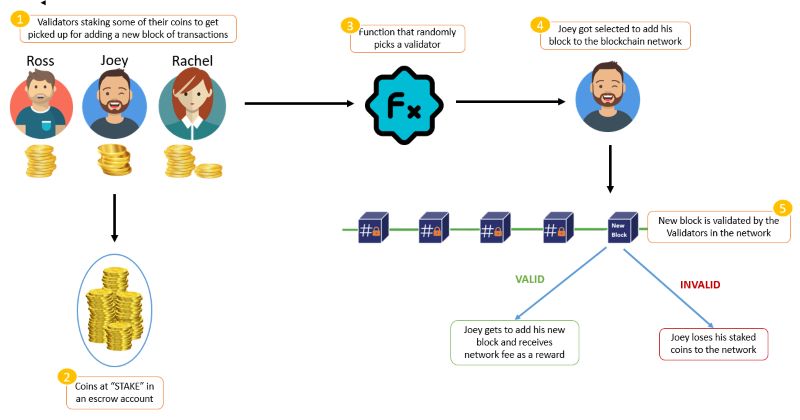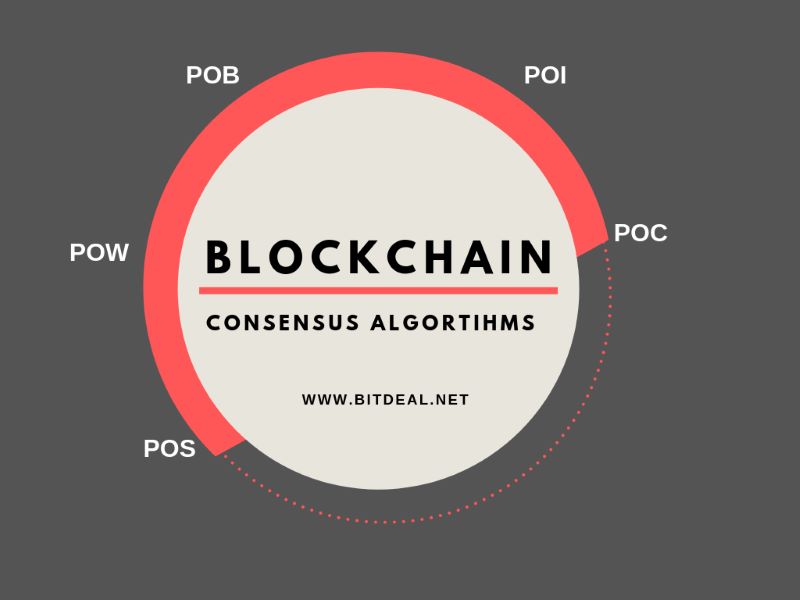As you dive into the intricate world of cryptocurrencies and decentralized ledgers, one term stands as the heartbeat of this groundbreaking technology: What is blockchain consensus algorithm? It’s the silent force that fosters trust where none exists, a digital handshake over a network of computers that agree, “Yes, this transaction is legit.” Without consensus mechanisms, blockchain would be a jumbled mess of data with no reliability. Today, I unravel the core of decentralized trust, guiding you from the bedrock of blockchain – its need for consensus – to the sleek, cutting-edge protocols carving the path forward. Get ready to understand why and how these algorithms are the linchpin in the secure, coordinated dance of decentralized systems.
Understanding the Need for Blockchain Consensus
The Role of Consensus in a Trustless Environment
Think of blockchain like a team where no one is the boss. We still need to agree on things. How? With rules everyone follows. These rules are called blockchain consensus mechanisms. They help us trust the system, even if we don’t trust each other. We know the network is safe without needing a boss to tell us.
Understanding these mechanisms is key. They are the heart of blockchain technology. With them, we can have a secure, fair system. From Bitcoin to your favorite online game, consensus keeps it all running smooth.
Now, let’s talk about how these rules work in the online world of money, cryptocurrency. Consensus protocols in cryptocurrency help us all agree without meeting face-to-face. They make sure no one cheats. They validate each coin and transaction. Think of them as the ultimate fairness checkers.
How Consensus Enables Secure, Decentralized Coordination
We count on blockchain consensus to keep our digital coins safe. It’s like building a fortress with teamwork. Everyone brings a brick, and these protocols check if the bricks fit just right. Proof of work explained simply is a math puzzle. You solve it, and everyone agrees you add a block to the fortress.
But math puzzles eat up a lot of energy, right? That’s where proof of stake description comes into play. You show you have some coins, like showing you have skin in the game. This means you care about keeping the network safe too.

Now, let’s dive into the geeky stuff, like how do blockchains agree even when things go wrong? There’s this thing called Byzantine fault tolerance. It’s a way for the system to keep humming even when some parts act weird.
Wait, there’s more. Some blockchains pick certain people to check transactions. This is called delegated proof of stake. These chosen ones are like class reps, keeping an eye on things for a while.
All these rules are like different flavors of ice cream. Choosing one depends on what you like best. Each has a role in making blockchain work right. They’re like the gears in a clock, each important for telling time.
Now, mining process and consensus are BFFs. They go hand-in-hand. Mining is finding new coins and adding them to the pile. Consensus is making sure that pile stays neat and in order.
Combine these and you get a world where everyone can take part. From folks at home to big businesses, blockchain network participation is open to all. It’s a world where our digital stuff is safe, thanks to this trusty consensus thing.
Finally, understand that security is not just a nice-to-have. It’s a must in the blockchain world. Consensus models and security walk together like best pals. They make sure we sleep well at night, knowing our digital treasures are safe.
Wrap your head around this, and you’re on your way to getting why blockchain is more than just tech talk. It’s a new way to agree and share in the digital playground. It’s a trustless friendship brought to life by smart, fair rules.
Exploring the Variety of Consensus Mechanisms
Proof of Work: The Backbone of Bitcoin
Proof of work (PoW) makes Bitcoin secure. Miners solve hard math puzzles here. They verify new transactions this way. Lots of computers compete to solve these puzzles. Winners add a block of transactions to the Bitcoin chain. They get new bitcoins as a prize!
PoW asks for a lot of computing power. This keeps the network safe. Why? Attacking it would cost more than you could earn. But PoW uses a lot of electricity. It’s like using a power-hungry machine all day, every day. That’s why some folks think it’s a bit wasteful.
Let’s dig deeper. In PoW, hash rate matters. It’s how fast computers solve puzzles. More miners mean a higher hash rate. A higher hash rate means more security for Bitcoin.
Yet, there’s a risk – the 51% attack. This is when someone controls more than half of the mining power. They could then cheat the system. But, this is tough to do because of the huge number of miners!
Proof of Stake: Defining a New Era of Validation
Proof of stake (PoS) is another way to keep a blockchain safe. People ‘stake’ or lock up their coins. Doing this gives them a chance to validate transactions and create new blocks. If they act honestly, they earn more coins. If not, they lose what they staked.
PoS does not need all those power-sucking computers. It’s more like a lottery. The more coins you stake, the better your chances are to get picked to add a block. This makes PoS more energy-friendly.
Understanding PoS also involves looking at blockchain governance. People with a stake have a say. They help make big decisions. It’s like owning a part of a company. The more shares you have, the stronger your voice is.

Decentralization is key in PoS. It means no single person calls the shots. Many folks work together to make the network reliable. This is good because it spreads power out. Hackers find it hard to mess with a bunch of people instead of just one.
Nodes and staking play a big part in PoS. Nodes are like checkpoints. They make sure everyone plays by the rules. Staking gives nodes skin in the game. They won’t be naughty because it could cost them money.
So, PoS is changing how we keep blockchains safe. It’s a bit like moving from old gas-guzzlers to slick electric cars. Both get you where you need to go. But one’s better for our planet.
That’s our tour of blockchain consensus mechanisms. They’re like the heart of the blockchain body—pumping trust throughout with every beat. Whether it’s PoW’s power play or PoS’s stake in the future, each has its role. They keep the blockchain world turning without anyone needing to trust anyone else. And that, my friends, is pretty cool!
The Impact of Consensus Algorithms on Blockchain Performance
Speed and Scalability: From PoW to PoS and Beyond
Consensus algorithms are the heart of blockchain. They keep everything honest and synced. Proof of Work (PoW) was first, making blockchain a hit. It checks transactions and security with complex math. But here’s the thing: it’s slow. It takes a lot of computer power, which limits speedy growth.
Enter Proof of Stake (PoS). It’s a game-changer for speed and growth. I’m proud to say it can validate transactions faster than PoW without needing tons of computer work. People can be part of the process by owning a stake in the currency. This approach means more transactions in less time. That’s key for handling more users and more uses.
But PoS isn’t all. There are others, like Delegated Proof of Stake (DPoS) and Byzantine Fault Tolerance (BFT). DPoS speeds things up by having users vote on a few to do the validating. BFT is about agreement. Even with some trying to mess things up, it ensures that all honest parties get to the truth.
Blockchains need speed to grow and be useful in real life. Great work on consensus algorithms is making them faster every day.
Consensus and Energy Consumption: A Sustainability Overview
Now, let’s talk energy. Consensus isn’t just about speed and growing big. It’s also about keeping our planet green. Mining with PoW burns a lot of power. That’s not good for Earth. We get where we want to go, but leave a mess behind.
Thankfully, we’re finding better ways. Remember PoS? Guess what – it uses less energy, a lot less. That’s because there’s no race to solve math puzzles. Staking uses what you have, like a bank holding money. So, it’s more energy-smart.
We always look for the best mix – solid security and being nice to nature. That’s where energy efficiency comes in. We’re hunting for the star algorithms that protect and don’t pollute. Doing the right thing matters.
Every new block means the network agrees. And when it does, that means no double-spends – you can’t spend your coin twice. Trust is top. So, algorithms that use less energy but still keep trust high? They’re the winners.
In short, consensus algorithms help blockchains work right. They help us agree without needing to trust everyone in the network. They check and double-check so we stay safe. And now, they’re getting better at saving energy, too. This is great news for us today and for the years ahead. Consensus is the key to blockchains we can count on without costing the Earth.
Future Trends in Blockchain Consensus
Innovations in Consensus Models: Enhancing Security and Efficiency
In the blockchain world, how we agree matters a lot. It’s all about trust. We trust that every person who adds new data plays by the rules. New ideas show up daily to make this process better.
First, understand that ‘consensus mechanisms’ are ways we all agree on what’s true. They’re key to keeping blockchain safe and fair. ‘Proof of work’ makes people solve challenges to add new data. This keeps the network safe. But, it eats up lots of power.
Now comes ‘proof of stake’ to save the day. It picks block creators based on their stakes. So, if you own more, you can add more to the chain. It uses less power and opens doors to more people.
But it’s not just about saving power. These new ways must also stop bad folks from damaging trust. Take ‘Byzantine fault tolerance’ as an example. Even if some players try to fool the system, this method keeps everything on track. It’s like a trusty guard for our digital chain of blocks.
Also, there’s what we call ‘delegated proof of stake’. Here, people choose a few to speak for many. It’s faster, but we must be careful who we trust with this power. Smart people are comparing all these methods. We’re always asking, “Which one keeps our coins safe and moves them fast?”
Soon, we might see new ways that mix parts of ‘proof of work’ and ‘proof of stake’. That’s exciting! We aim for a solid mix of safety and speed.
Governance in the Age of Blockchain: Centralization vs. Decentralization Dynamics
Now, how we make rules in the blockchain world can shake things up. This is called ‘governance’, and it’s crucial. It’s about finding balance. We don’t want one big boss but having no rules isn’t an option either.
Some say too much control can ruin ‘decentralization’. That’s the idea that no one person holds all the cards. Yet, having a bit of order helps. It keeps our digital blocks in line and our coins moving right.
Governance shapes how ‘nodes’ – computers in the network – work together. It’s top stuff for those owning a stake in the game. We keep working on how to let everyone have their say without chaos at bay.
Smart contracts also link to this rule-making game. They’re deals set in code. With the right governance, they run without a hitch. We need good rules to make sure these deals go smooth.

In the end, it’s all about trust. Rules make sure nobody spends the same coin twice. This is big – it keeps our digital cash worthy. It’s about making a system where everyone can trust it, without needing to trust each other.
So hang tight! We’re in for a ride with changes on how we agree and make rules in this wild world of blocks. It’s all about making blockchain even more rock-solid and super swift!
We’ve learned a lot about how blockchain consensus keeps digital dealings safe and fair. We first saw how consensus builds trust where it’s scarce. It’s key for teamwork without a middleman. Then, we delved into the main types: Proof of Work and Proof of Stake. These are the gears in the clock of blockchain.
From there, we noticed how fast and big a blockchain can get with these methods. We also saw how they affect our planet, thinking green as we go digital. Finally, we peeped into the future, eyeing new, smarter ways to agree on the blockchain and questioning who’s in charge.
Keeping all this in mind, it’s clear: consensus is the heartbeat of blockchain. It will get sharper, even as it shapes how we share and store our digital stuff. Let’s watch this space. The next big thing might just be around the block!
Q&A :
What is a blockchain consensus algorithm?
A blockchain consensus algorithm is a set of rules and processes that ensure all participants on a blockchain network agree on a single version of the truth. It’s a critical aspect of blockchain technology, as it allows for secure and decentralized decision-making among nodes, even when they do not necessarily trust each other.
How does a consensus algorithm work in blockchain?
In blockchain, a consensus algorithm works by having network participants follow a specific protocol for validating transactions and adding new blocks to the chain. Nodes on the network propose new blocks by packaging transactions and then follow the consensus rules to agree on the state of the ledger. This can involve proof of work, proof of stake, or other mechanisms designed to achieve agreement and prevent issues like double-spending.
Why is consensus important in a blockchain network?
Consensus is vital in blockchain networks to maintain the integrity and security of the distributed ledger. It’s the mechanism that ensures all copies of the database are the same across the network, which is necessary for the trustless environment blockchains operate in. Without consensus, there would be no agreed-upon way to verify transactions and the system would be vulnerable to various types of attacks.
What are the most common consensus algorithms used in blockchain?
The most common consensus algorithms used in blockchain include Proof of Work (PoW), Proof of Stake (PoS), Delegated Proof of Stake (DPoS), and Practical Byzantine Fault Tolerance (PBFT). Each has its own way of securing the network and has been adopted by different blockchain projects based on their specific needs and objectives.
Can blockchain consensus algorithms be environmentally friendly?
Yes, blockchain consensus algorithms can be environmentally friendly, especially those that do not rely on extensive computational work like Proof of Stake (PoS) and its variants. Unlike Proof of Work, which requires significant energy consumption for mining activities, PoS and similar algorithms allow for network security with a much lower carbon footprint, making them a greener alternative for achieving consensus on a blockchain network.


